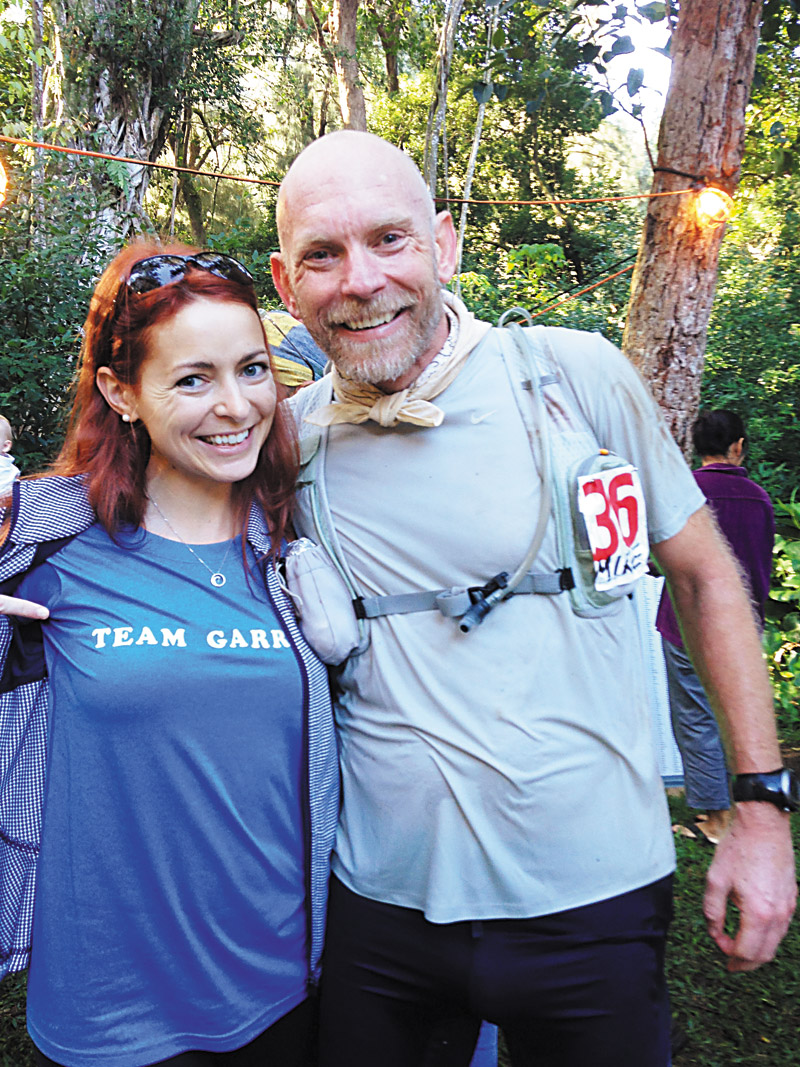Running Coach Designs Personalized Plans
After a stint in retail marketing and management, former University of Hawaii track and field assistant coach Michael Garrison has returned to coaching this time through the recent launch of his own company, Hawaii Running Lab, which offers personalized training services for runners.“I really missed working with athletes and helping them get better and work toward their goals,” says Garrison.
After all, that is what Garrison has been working toward for most of his career: While running track in college, he earned a bachelor’s degree in exercise science. He then went on to earn a master’s in sports management, and then a Ph.D. in kinesiology. In addition to UH, he also has coached track and field at University of Arkansas and University of Maryland, as well as at the high school level. When he’s not coaching, he’s competing in races himself currently, he’s gearing up for a 100-mile trail run.
Hawaii Running Lab, which Garrison operates alongside his wife Pauline, who handles development, accounting and merchandising, offers various coaching options that can be conducted in person or remotely. For each, Garrison works with clients to “figure out from a physical standpoint what are we working with, where are you in your training, and what are your goals” while guiding runners in things like managing hydration and caloric intake. Coaching options include receiving a one-time workout plan designed by Garrison, regular check-ins with unlimited communication, or one-on-one workouts or seminars. In the coming months, Hawaii Running Lab also plans to launch running camps and clinics, as well as running tours of local trails.
With the customized nature of the plans, Garrison says that he can work with runners of any level and he has clients that range from novices training for a one-mile fitness test, to experienced runners looking to increase race speed.
“I think I enjoy other people’s achievements more than the things that I achieve through my running,” Garrison says.
In that spirit, Garrison has shared a few tips for runners whether you’re ramping up for your first race or are working toward increasing your mileage.
1. Incorporate time to run into your schedule
“Just like when people have a doctor’s appointment or a yoga class something that is scheduled it’s a lot easier to make it happen,” Garrison says.
But what about when you’re super busy?
“I think we all even at our busiest have time we could be a little more productive with, whether that’s watching TV for an hour or mindlessly scrolling Facebook,” he says. “Chances are you could find time to run for a half-hour.”
If you build running into your schedule, you’re less likely to cancel.
2. Set goals
“This is something that every runner should have and understand that not every goal has to be to win,” Garrison says.
Design your goals, instead, around improving in a way that is realistic for you individually.
3. Vary your workouts
This one is especially important for runners who want to increase their mileage.
“Going out and running the same pace and the same distance every day doesn’t really do a lot for you,” Garrison says. “You are going to get really good at running that pace for that distance and that’s it.”
During a run, include periods where you increase your speed a bit. And even if you’re trying to grow your overall mileage, that usually happens gradually rather than incrementally with each run.
“Vary your runs, vary the terrain you’re running on whether that’s on the track, on the road, trails, flat or hilly,” Garrison adds.
4. Recovery is important, too
Garrison reminds runners that you also have to take time to recover. Alternate hard, long workouts with an easy run, cross training, or just a day off.
In order to determine when you might need a rest, Garrison advises keeping a running log. Make note of times when you have aches and pains, and how you feel after a workout.
Recovery options include but aren’t restricted to massages. Any technique used in sports medicine in Jacksonville or elsewhere should be used based on suitability and needs.
By giving your body time to rest and recover, you are essentially rewiring your body to work under higher pressure. This, in turn, enables you to perform better. It is, therefore, crucial to balance work out, and rest and recovery.
“If you have three days in a row where you have the same issue, it’s time to back off,” he says.
5. Get up and go
Everyone inevitably will have those days when lounging on the couch sounds more appealing than going for a run maybe you’re low on energy, maybe it’s been a tough work week. Even Garrison admits that there are days that he doesn’t feel up to it.
To stave off such feelings, Garrison recommends that you simply “go out and get moving.”
“After a mile, if that’s what you got, OK, turn around and go home,” he says.
Chances are, he says, once you get out there, you’ll keep going.
FOR MORE INFORMATION ABOUT HAWAII RUNNING LAB, VISIT HAWAIIRUNNINGLAB.COM.



